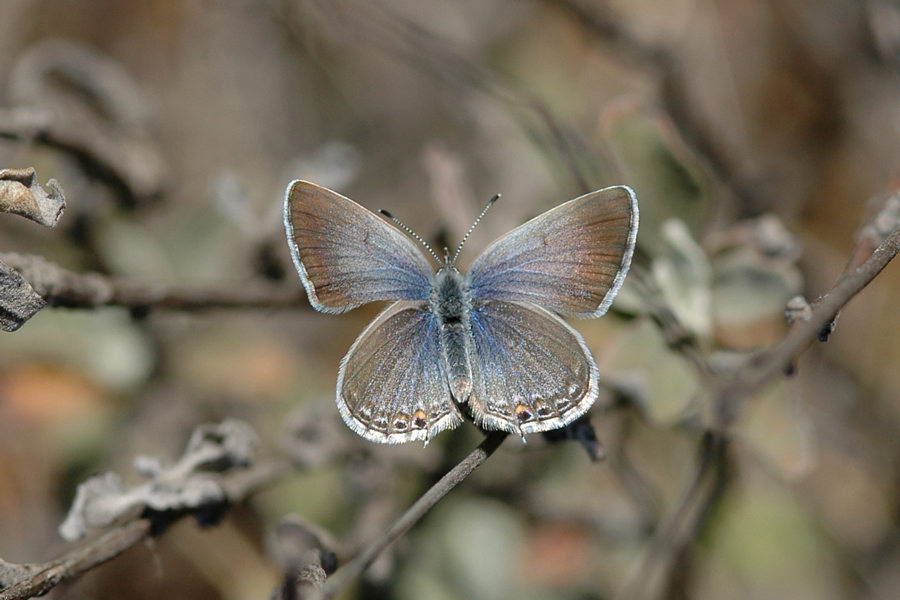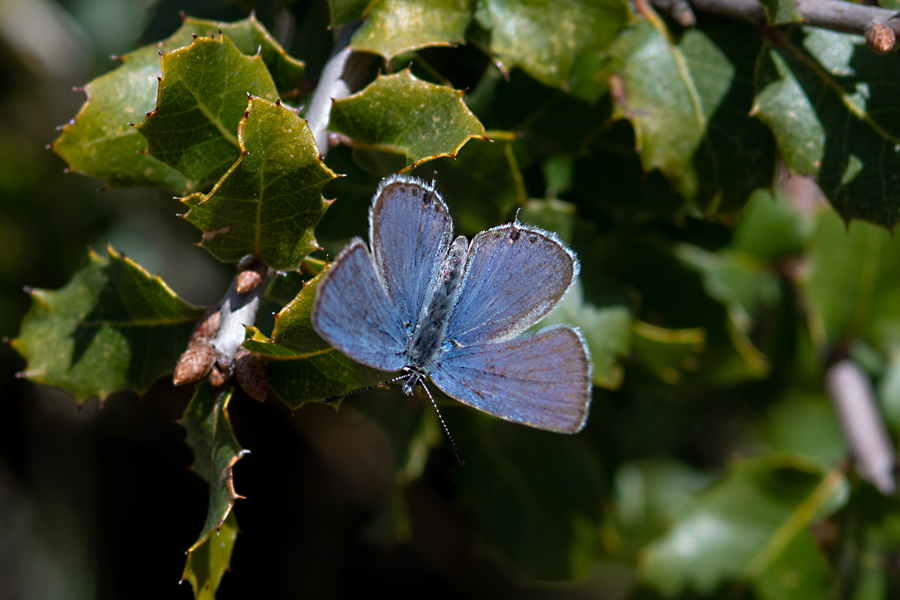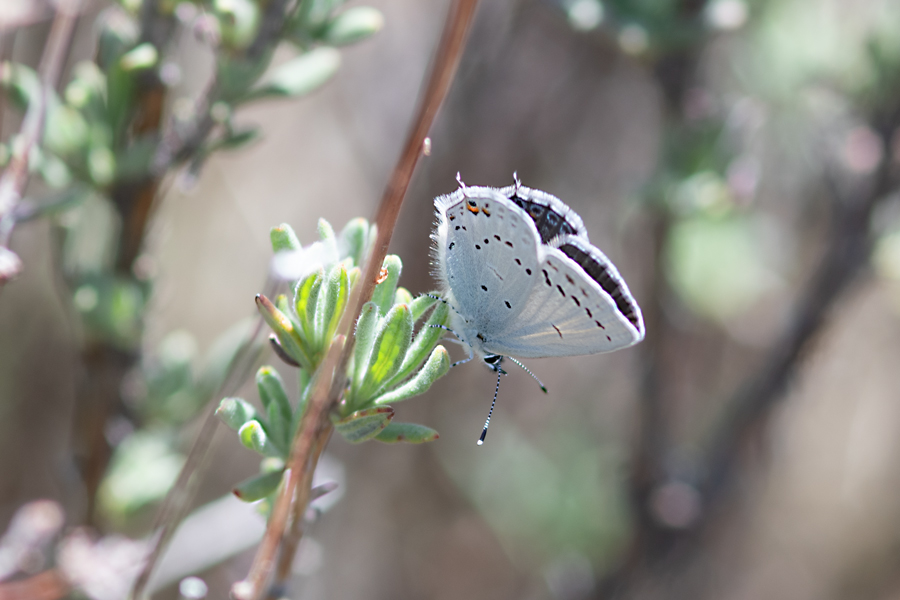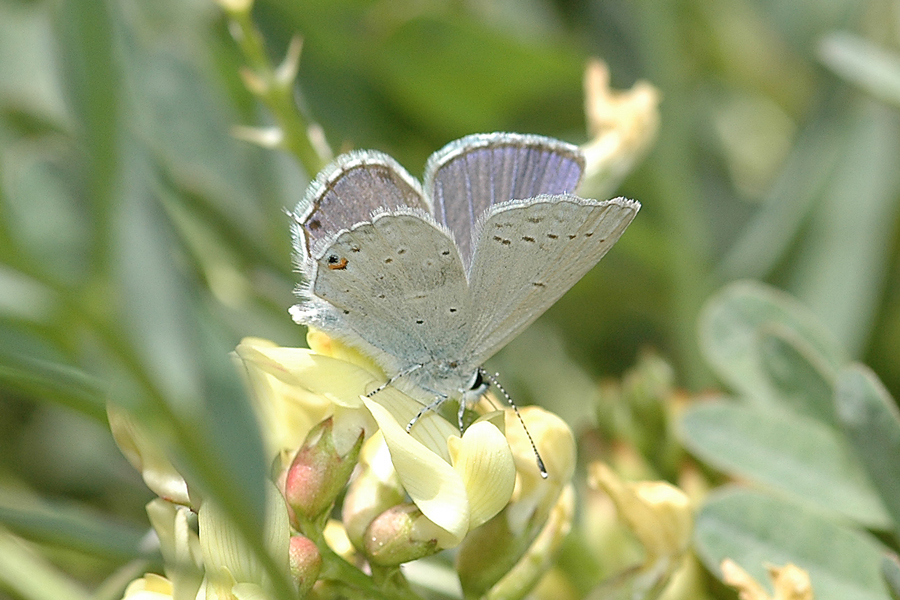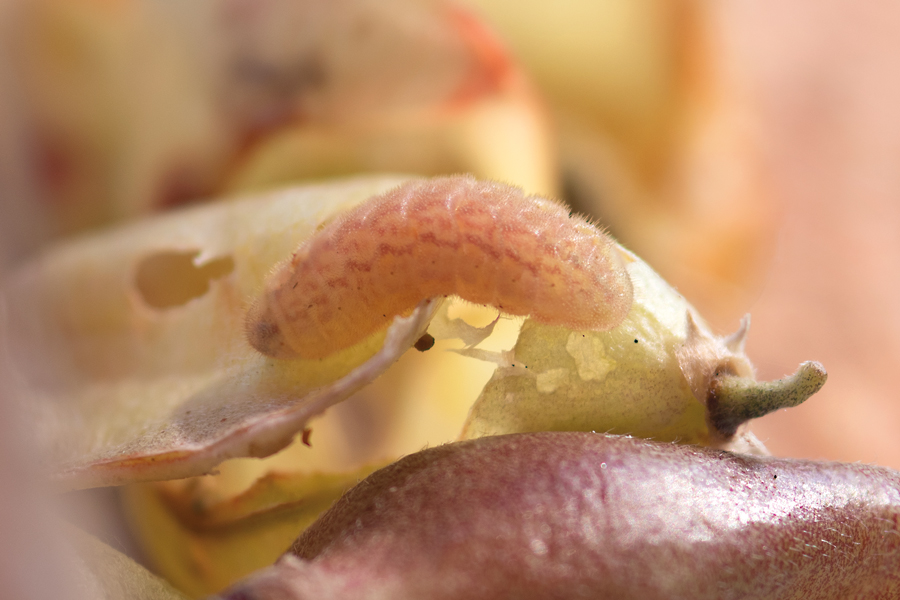Everes amyntula amyntula
Western Tailed Blue
If there are tail-less hairstreaks, then why not a blue with tails? This character makes identification easy, except that the smaller eastern tailed blue (Everes comyntas) may rarely appear in parts of southern California (though apparently not as an established species). This blue typically flies in the spring/summer where Astragalus grows, with larvae entering the pods and eating the seeds. I've seen it in January along the coast, and there are autumn records as well.
I'm going with genus Everes instead of Cupido with Pratt, Emmel, and Paul Opler, but I have gone back and forth over the years.
